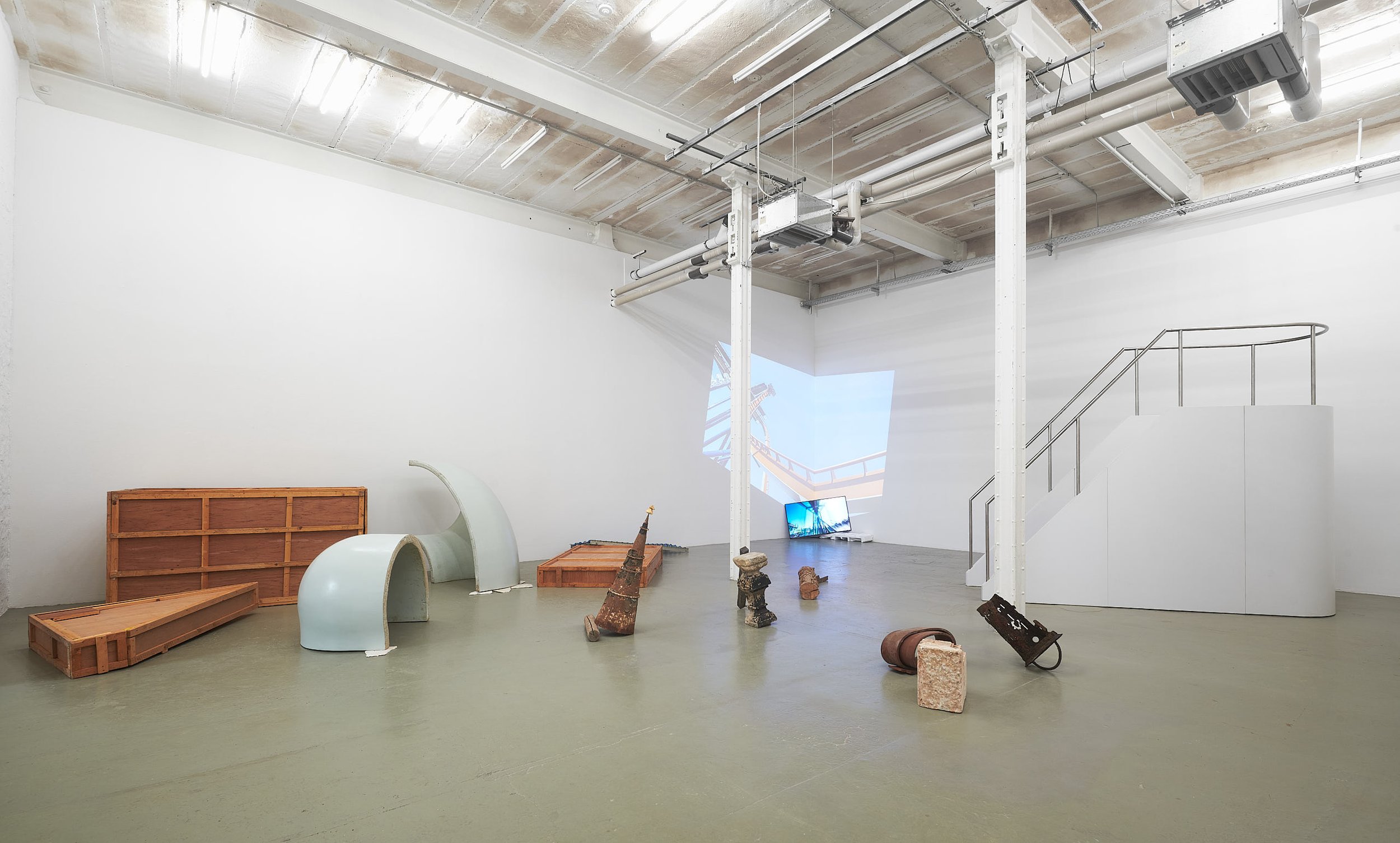
Crashkurs
Solo Exhibition, Galerie b2, Leipzig, Germany, 2024
Text by Guy Eytan
Nothing is more mysterious than the ensemble of procedures, always identical and never predictable, by which night succeeds day. The first portent of these procedures is always a matter for doubt and anxiety. No one can tell what forms will be adopted, on this one particular occasion, by the night's insurrection. Impenetrable is the alchemy by which each colour transforms itself into its complementary colour, whereas, on the palette, as we all know, we should have to open another tube of paint to achieve this same result. Where night is concerned there is no limit to the minglings and comminglings which may be achieved; for night comes to us as a deceiver. The sky turns from pink to green; but it does so because I have failed to notice that certain clouds have turned bright red and, in doing so, make the sky look green by contrast. The sky had, in effect, been pink; but a pink so pale that it could no longer struggle against the very high-keyed red; and yet I had not seen that red come into being, since a modulation from gold to red is less startling to the eye than a modulation from pink to green. It was by a trick, therefore, that night made its entrance into the sky. 1
Colorless green ideas sleep furiously. 2
In Michael Hahn’s work, objects are being reused and recontextualized in a way to make not only the current amalgam new and exciting, but also as a call to dismantle the horizon of meaning in other spaces. The objects are like words to be recontextualized and rediscovered. For example, one evening the conversation between Hahn and friends involved a work he exhibited once and planned to exhibit again. In the work there was an element of a cave, and then a kid went inside, had a moment of paralyzing claustrophobia and had to be helped out. Hahn was asked if he is planning on closing it off for the next time it is shown, the answer – stated as if it was obvious – was that it is going to be shown upside down. The order matters. When you shift the order of the verb and noun, you change from question to statement or the other way around. And that is part of the point – what is scarier, the answer or the question? And what came first?
A television screen, using its own packaging as a pillow, basks in the light of a projector and beckons to the viewer – makes them both fascinated and slightly unstable. The world clock, situated as an antiquated control center, sits in a small room blinking to itself, telling things that are as important as they are unhelpful. Language is breaking apart, words are being turned into dog whistles, into foghorns, into silence, but the body remains – objects as language as an expanded field. There is a certain degree of anxiety that comes from the realization that there is no stable ground. The structure of meaning is a structure of negative meaning, it is the sum of what it is not. After the anxiety that comes from instability and confusion, comes the rise of playfulness, where change is a constant and there is joy in the new connections that can happen in the fog of negative meanings. This playfulness that hints at the uncertainty is both where the work resides and where it leaves the viewer. It is a dismantling blow that reverberates afterwards. It does not ask a direct question, but it does leave you wondering if the staircase was always like that? And what is the meaning of that specific color of sky with that specific type of concrete?
I might be over optimistic, but I hope that a well-placed proverbial stumbling block can change how someone will look at the world for at least a little bit. However, in order to stumble one needs to be traveling, and in order to get you to want to travel the work has to be seductive and leave enough room for you to walk into it.
1 Lévi-Strauss, Claude. Tristes Tropiques.1955. (A World On The Wane. 1961. Translated by John Russel.) p. 71-72. London: Hutchinson.
2 Chomsky, Noam. Syntactic Structures, p. 15. Berlin: Mouton de Gruyter. 2002.





















